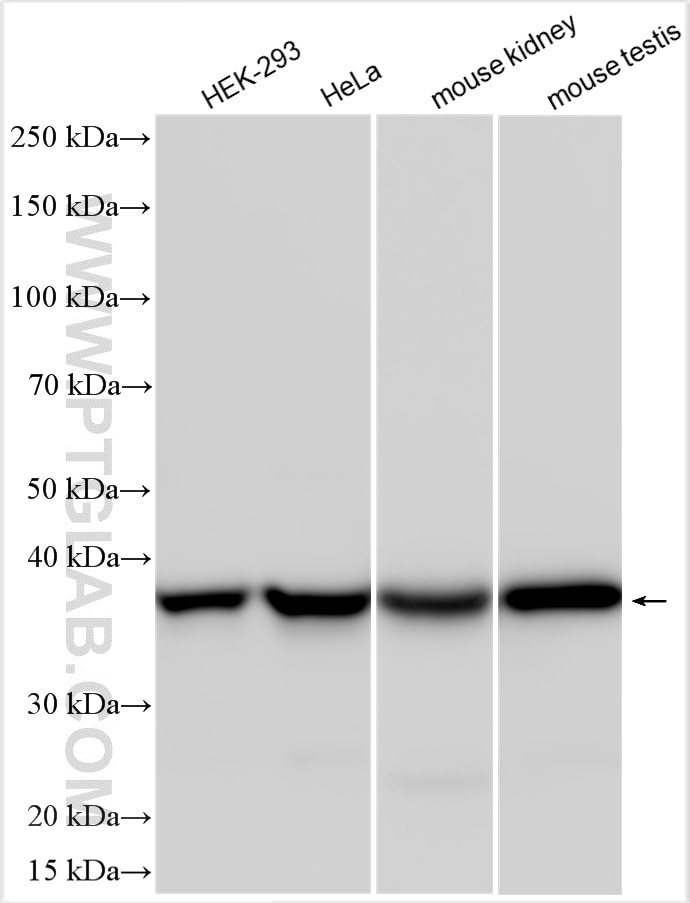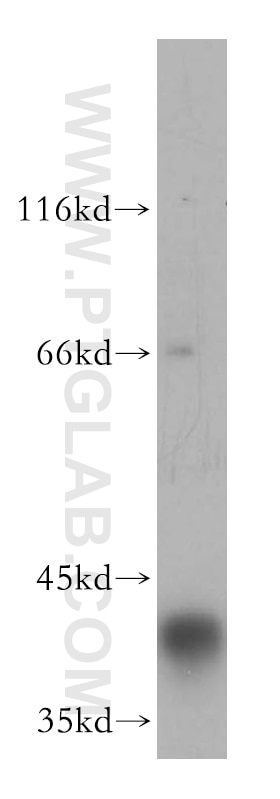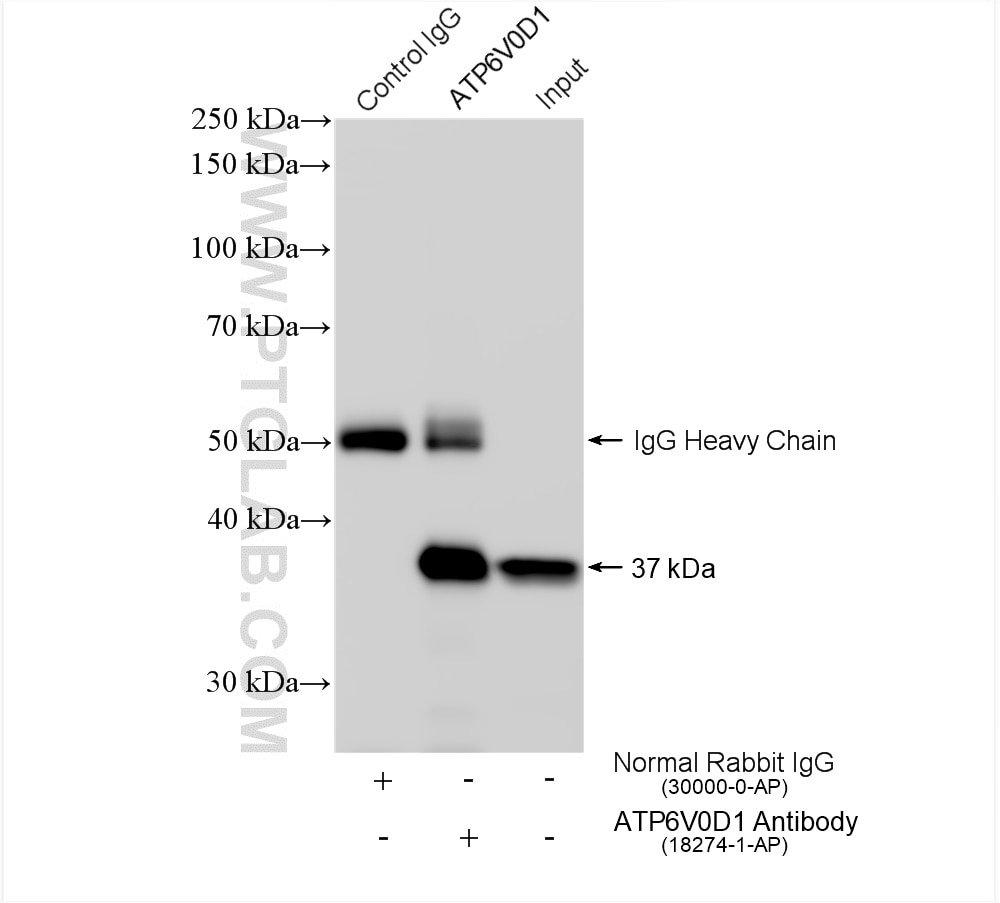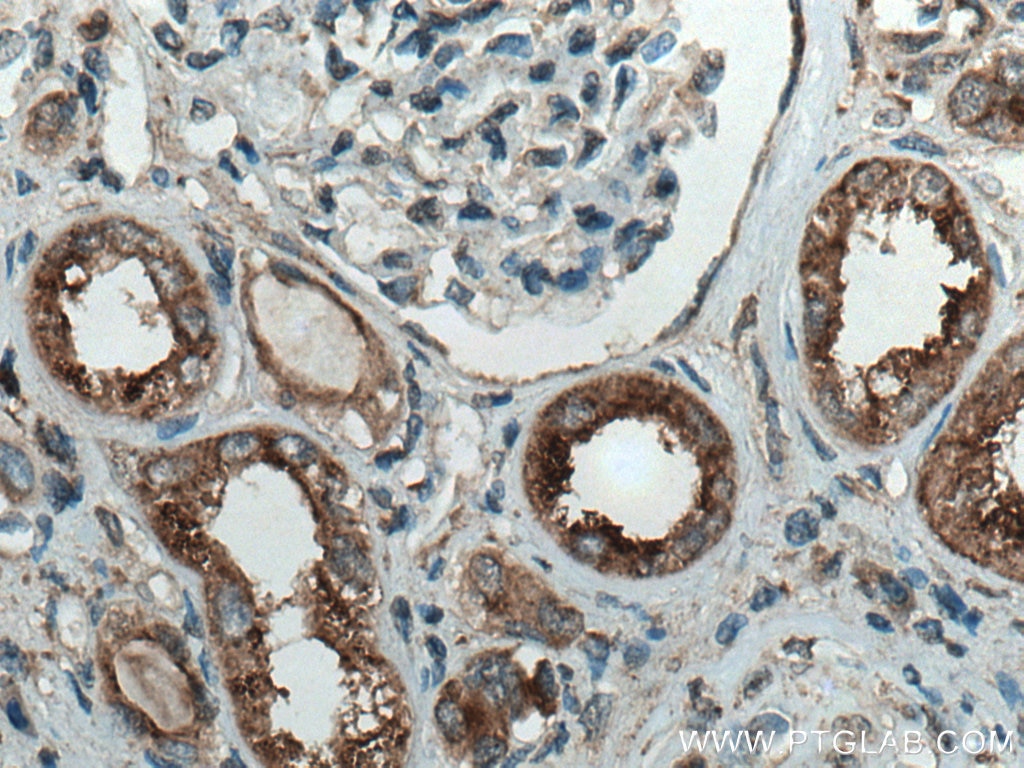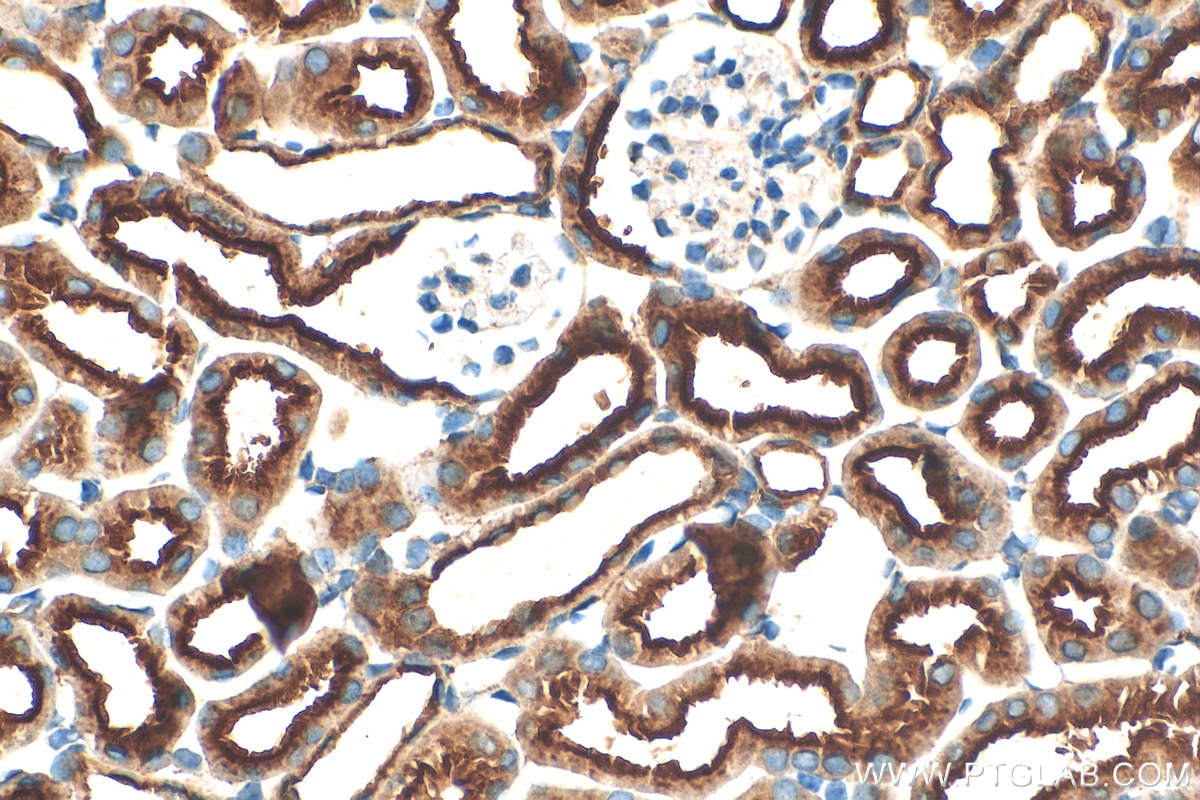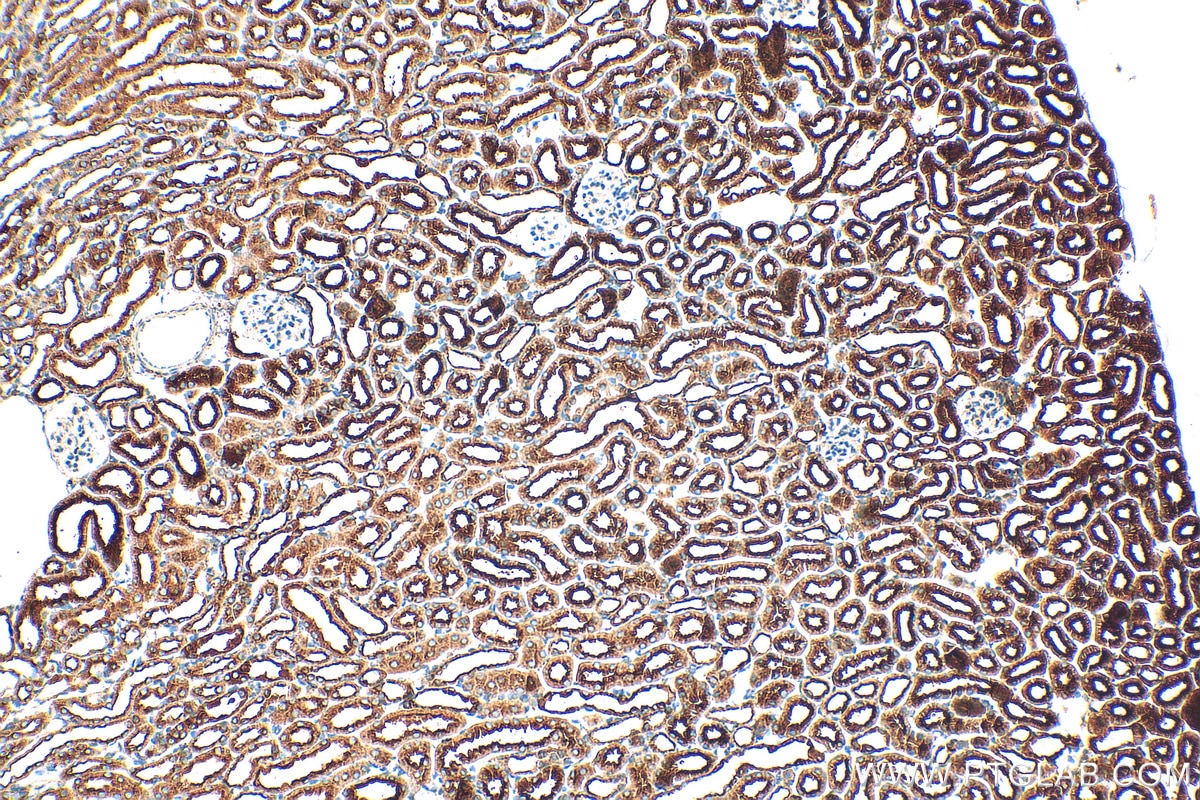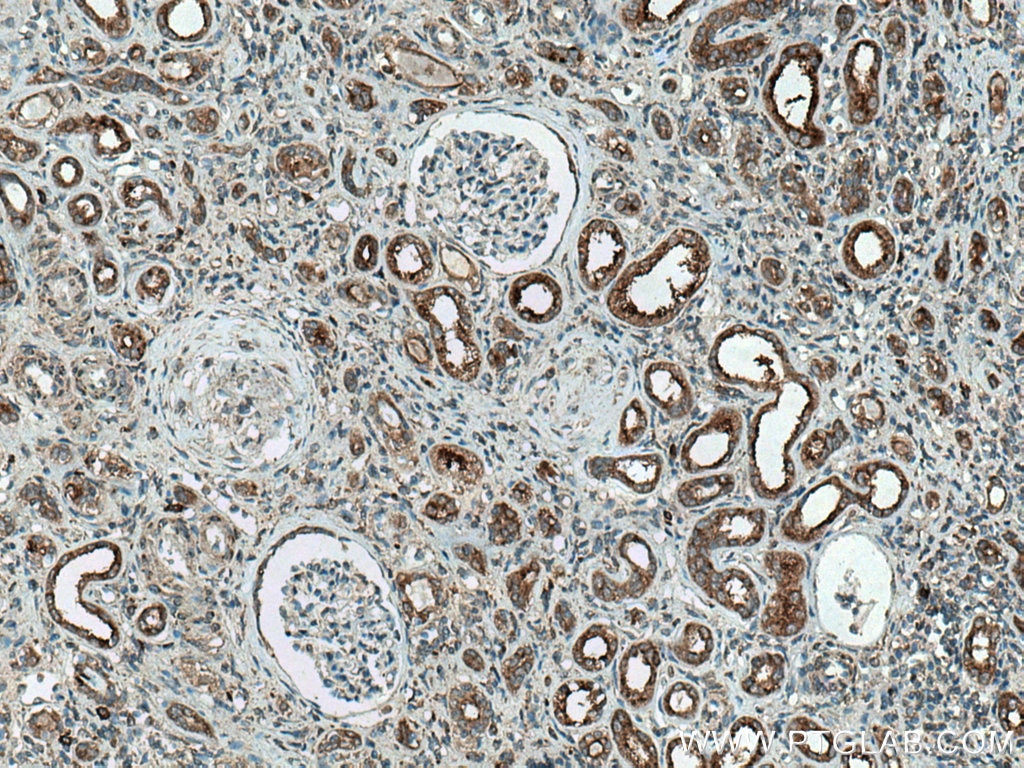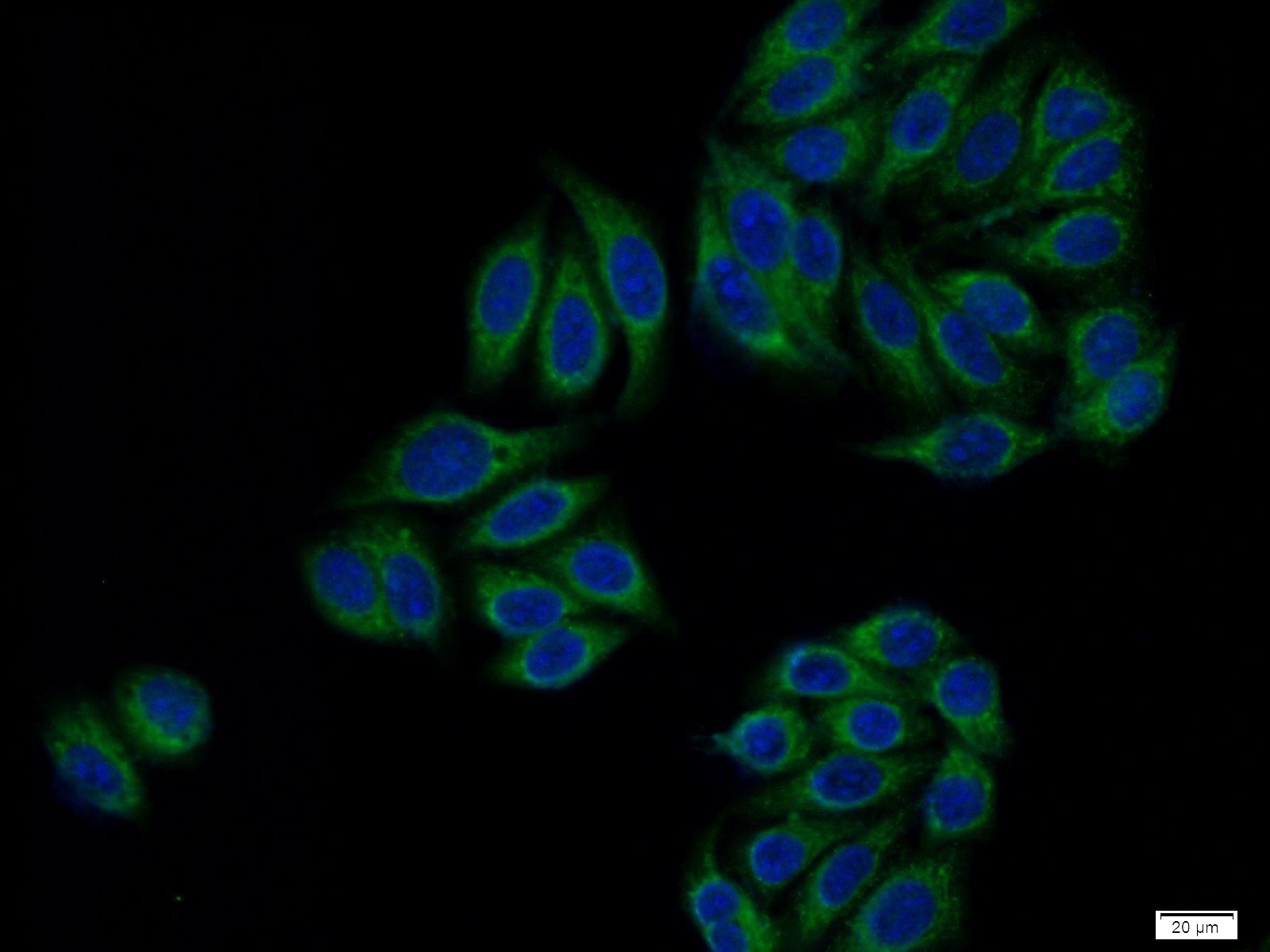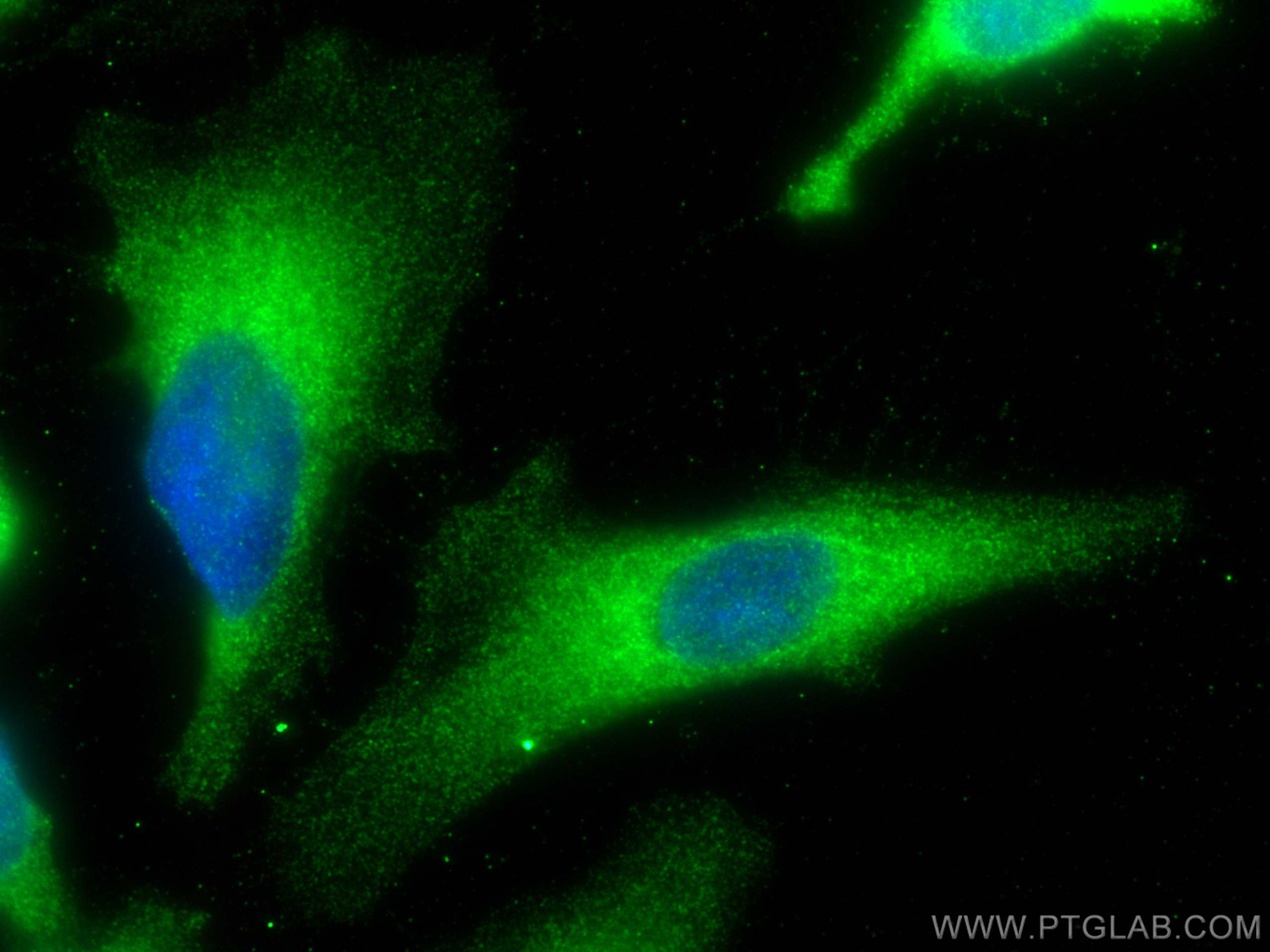- Featured Product
- KD/KO Validated
ATP6V0D1 Polyklonaler Antikörper
ATP6V0D1 Polyklonal Antikörper für WB, IHC, IF/ICC, IP, ELISA
Wirt / Isotyp
Kaninchen / IgG
Getestete Reaktivität
human, Maus, Ratte
Anwendung
WB, IHC, IF/ICC, IP, ELISA
Konjugation
Unkonjugiert
Kat-Nr. : 18274-1-AP
Synonyme
Geprüfte Anwendungen
| Erfolgreiche Detektion in WB | HEK-293-Zellen, HeLa-Zellen, humanes Plazenta-Gewebe, Mausnierengewebe, Maushodengewebe |
| Erfolgreiche IP | Maushodengewebe |
| Erfolgreiche Detektion in IHC | Mausnierengewebe, humanes Nierengewebe Hinweis: Antigendemaskierung mit TE-Puffer pH 9,0 empfohlen. (*) Wahlweise kann die Antigendemaskierung auch mit Citratpuffer pH 6,0 erfolgen. |
| Erfolgreiche Detektion in IF/ICC | HeLa-Zellen |
Empfohlene Verdünnung
| Anwendung | Verdünnung |
|---|---|
| Western Blot (WB) | WB : 1:2000-1:10000 |
| Immunpräzipitation (IP) | IP : 0.5-4.0 ug for 1.0-3.0 mg of total protein lysate |
| Immunhistochemie (IHC) | IHC : 1:50-1:500 |
| Immunfluoreszenz (IF)/ICC | IF/ICC : 1:50-1:500 |
| It is recommended that this reagent should be titrated in each testing system to obtain optimal results. | |
| Sample-dependent, check data in validation data gallery | |
Veröffentlichte Anwendungen
| KD/KO | See 1 publications below |
| WB | See 20 publications below |
| IHC | See 1 publications below |
| IF | See 6 publications below |
| IP | See 2 publications below |
Produktinformation
18274-1-AP bindet in WB, IHC, IF/ICC, IP, ELISA ATP6V0D1 und zeigt Reaktivität mit human, Maus, Ratten
| Getestete Reaktivität | human, Maus, Ratte |
| In Publikationen genannte Reaktivität | human, Maus, Ratte |
| Wirt / Isotyp | Kaninchen / IgG |
| Klonalität | Polyklonal |
| Typ | Antikörper |
| Immunogen | ATP6V0D1 fusion protein Ag13002 |
| Vollständiger Name | ATPase, H+ transporting, lysosomal 38kDa, V0 subunit d1 |
| Berechnetes Molekulargewicht | 351 aa, 40 kDa |
| Beobachtetes Molekulargewicht | 37-41 kDa |
| GenBank-Zugangsnummer | BC008861 |
| Gene symbol | ATP6V0D1 |
| Gene ID (NCBI) | 9114 |
| Konjugation | Unkonjugiert |
| Form | Liquid |
| Reinigungsmethode | Antigen-Affinitätsreinigung |
| Lagerungspuffer | PBS with 0.02% sodium azide and 50% glycerol |
| Lagerungsbedingungen | Bei -20°C lagern. Nach dem Versand ein Jahr lang stabil Aliquotieren ist bei -20oC Lagerung nicht notwendig. 20ul Größen enthalten 0,1% BSA. |
Hintergrundinformationen
ATP6V0D1(V-type proton ATPase subunit d 1) is also named as ATP6D, VPATPD and belongs to the V-ATPase V0D/AC39 subunit family.It is responsible for acidifying a variety of intracellular compartments in eukaryotic cells, thus providing most of the energy required for transport processes in the vacuolar system.
Protokolle
| PRODUKTSPEZIFISCHE PROTOKOLLE | |
|---|---|
| WB protocol for ATP6V0D1 antibody 18274-1-AP | Protokoll herunterladen |
| IHC protocol for ATP6V0D1 antibody 18274-1-AP | Protokoll herunterladenl |
| IF protocol for ATP6V0D1 antibody 18274-1-AP | Protokoll herunterladen |
| IP protocol for ATP6V0D1 antibody 18274-1-AP | Protokoll herunterladen |
| STANDARD-PROTOKOLLE | |
|---|---|
| Klicken Sie hier, um unsere Standardprotokolle anzuzeigen |
Publikationen
| Species | Application | Title |
|---|---|---|
Autophagy Follicular lymphoma-associated mutations in the V-ATPase chaperone VMA21 activate autophagy creating a targetable dependency | ||
Autophagy Disruption of the vacuolar-type H(+)-ATPase complex in liver causes MTORC1-independent accumulation of autophagic vacuoles and lysosomes. | ||
Cell Mol Life Sci The Ncoa7 locus regulates V-ATPase formation and function, neurodevelopment and behaviour. | ||
Cells A Role for the V0 Sector of the V-ATPase in Neuroexocytosis: Exogenous V0d Blocks Complexin and SNARE Interactions with V0c |
Rezensionen
The reviews below have been submitted by verified Proteintech customers who received an incentive for providing their feedback.
FH Zakia (Verified Customer) (05-22-2024) | we are using this for our lab, Works great,
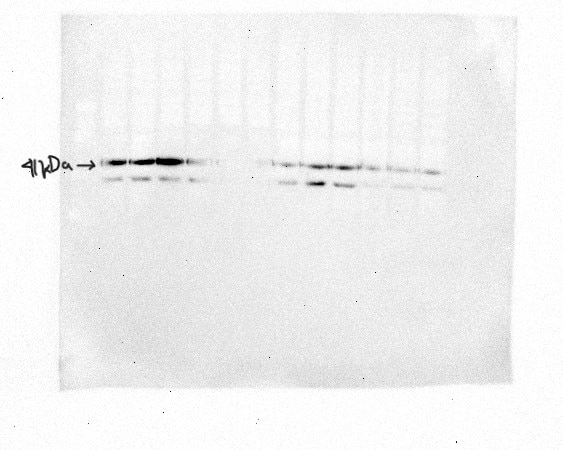 |
